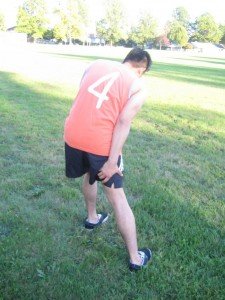Varicose eczema is a long-term skin condition that typically affects the lower legs and quite common among individuals who have varicose veins. This is also called as venous eczema or stasis eczema.
Signs and symptoms
Just like with other types of eczema, the affected skin of the individual becomes red and swollen, itchy, scaly or crusty as well as flaky and dry.
There are also periods when these symptoms improve and times when they become severe. The legs can become swollen especially at the end of the day or after prolonged periods of standing. Varicose veins are often evident on the legs. Other symptoms that can manifest include the following:
- Pain
- Brown discoloration of the skin
- Tender, reddened and tight skin that can harden
- Small-sized white scars
- Eczema that affects other parts of the body

Just like with other types of eczema, the affected skin of the individual becomes red and swollen, itchy, scaly or crusty as well as flaky and dry.
If not treated, there is the possibility for leg ulcers to develop. These are long-standing wounds that occur on skin that was damaged.
When to seek medical care
A doctor should be consulted if there are symptoms of varicose eczema. The doctor can provide a diagnosis by simply assessing the skin.
What are the causes of varicose eczema?
Varicose eczema is caused by increased pressure in the leg veins. Once the small valves in the veins do not function properly, it is difficult for blood to be pushed against gravity and there is a tendency for it to leak backwards.
This increases the pressure in the veins that can cause the leakage of fluid into the neighboring tissue. It is believed that varicose eczema can develop due to the reaction of the immune system to the buildup of fluid. Always bear in mind that varicose eczema is quite common among those who have varicose veins since these are indications that the leg veins are not functioning properly.
Treatment for varicose eczema
Varicose eczema is considered as a long-term condition but there are treatments available to keep the condition under control. In most cases, the treatment involves a combination of the following:
- Self-care measures is aimed on improving the circulation such as staying active and frequently elevating the legs
- Emollients or moisturizers are applied on the skin to prevent dryness
- Topical corticosteroids whether in cream or ointment form are applied on the skin to help manage the symptoms
- Compression stockings are used on a daily basis which work by steadily squeezing the legs as well as help improve circulation
In case these treatment options could not help, the doctor might refer the individual to a dermatologist in case there is another cause for the symptoms or if another type of eczema such as contact dermatitis is suspected.
If the individual has varicose veins, a specialist might be referred so that proper treatment options for varicose veins can be started.

